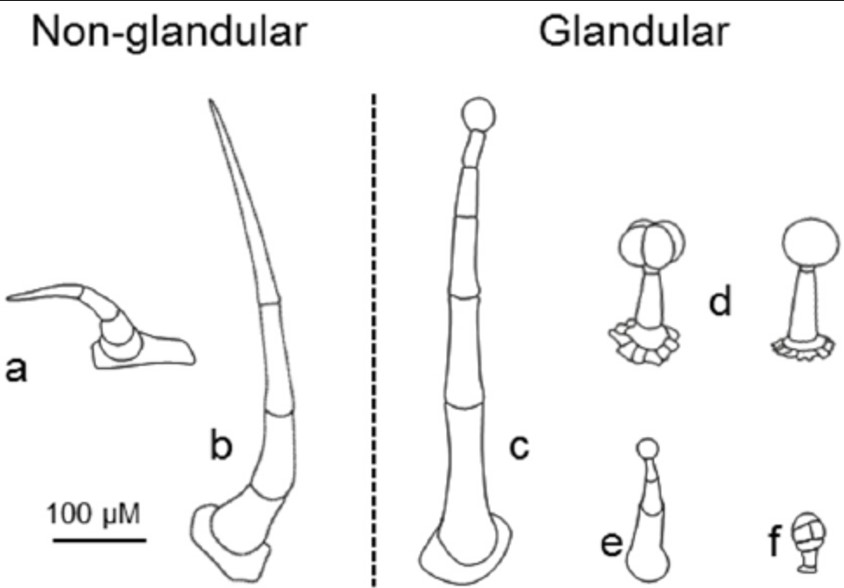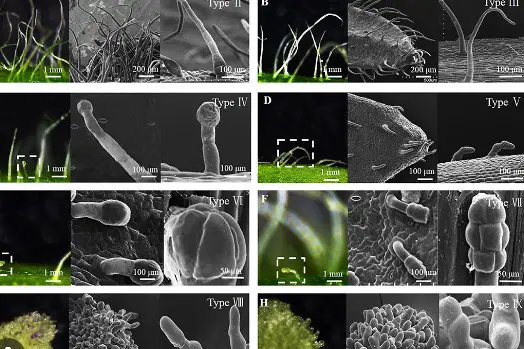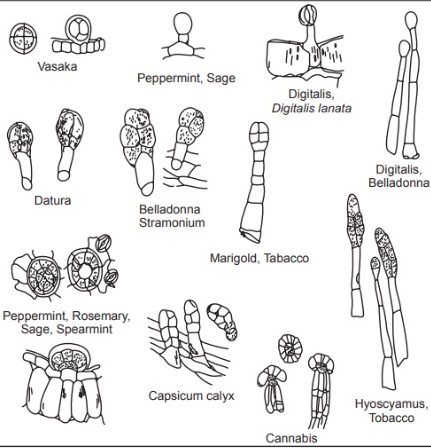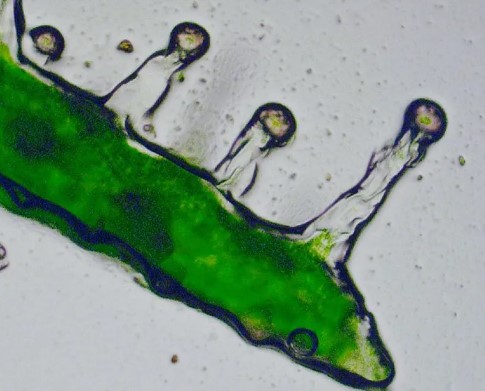Trichomes are microscopic structures that adorn the surfaces of many plants, playing a crucial role in their survival and interaction with their environment. These tiny appendages are not just botanical curiosities; they are vital components of a plant’s defense system, offering protection against pests and diseases, and sometimes even contributing to a plant’s reproductive process. The diversity of trichomes, from their shape to their function, reflects the adaptability and complexity of plant life.
The distinction between glandular and non-glandular trichomes lies primarily in their structure and function. Glandular trichomes are characterized by their ability to produce and secrete substances such as essential oils, resins, and other compounds. Non-glandular trichomes, on the other hand, do not produce these substances and serve mainly as physical barriers against various environmental stressors, including herbivores and harmful UV radiation.
Understanding the difference between these two types of trichomes is not merely an academic exercise. It reveals the sophisticated ways plants have evolved to protect themselves, interact with their ecosystem, and ensure their survival and reproduction. The study of trichomes bridges disciplines, from botany and ecology to pharmacology and agriculture, highlighting their significance in both natural and applied sciences.

Trichome Basics
Types of Trichomes
Trichomes are tiny appendages on plants that play critical roles in their survival. Their diversity is astonishing, with variations in shape, size, and function reflecting the adaptability of plant species across different environments. Broadly, trichomes can be categorized into two main types: glandular and non-glandular. This distinction is crucial, as it underpins their functions and impacts on the plant’s interaction with its surroundings.
Function of Trichomes
Role in Plant Protection
Trichomes serve as the first line of defense against various threats, including herbivores, pathogens, and even excessive sunlight. By either producing toxic substances or forming physical barriers, these microscopic structures significantly enhance a plant’s ability to thrive in its habitat.
Other Functions
Beyond protection, trichomes are involved in:
- Reducing water loss: By trapping moisture, they help in maintaining the plant’s water balance.
- Temperature regulation: Their reflective properties can shield plants from intense sunlight.
- Pollination facilitation: Certain trichomes can attract pollinators, aiding in the reproductive process.
Glandular Trichomes
Characteristics
Structure
Glandular trichomes are distinguished by their secretory cells that are capable of producing a wide array of chemical compounds. These structures often appear as stalked glands or bulbous tips on the plant surface, designed for optimal secretion.
Chemical Composition
The biochemical makeup of glandular trichomes is diverse, encompassing essential oils, terpenes, and other secondary metabolites. These compounds are not just by-products of the plant’s metabolism but are critical for its survival and interaction with the ecosystem.
Functions
Defense Mechanisms
The chemicals secreted by glandular trichomes can deter herbivores and inhibit the growth of fungal pathogens, providing an effective chemical shield for the plant.
Attraction and Interaction with Insects
Some secretions play a role in attracting beneficial insects, such as pollinators or predators of plant-eating pests. This dual role underscores the complexity of plant-environment interactions mediated by trichomes.
Examples
Plants like cannabis, mint, and tomato are well-known for their glandular trichomes, which produce distinctive aromas and possess various medicinal and protective properties.
Non-Glandular Trichomes
Characteristics
Physical Attributes
Non-glandular trichomes lack the secretory cells found in their glandular counterparts. Instead, they are often hair-like structures that provide physical barriers against environmental stressors.
Composition Differences from Glandular Trichomes
Without the complex chemical compositions of glandular trichomes, non-glandular types rely on their physical structure to perform their functions. They are typically composed of dead cells that form layers of protection.
Functions
Physical Defense
By creating a physical barrier, non-glandular trichomes can protect plants from being eaten by larger herbivores or being infested by smaller pests and pathogens.
Environmental Adaptations
These trichomes can also help plants adapt to their environment in several ways, including reducing water loss and protecting against UV radiation. Their ability to reflect light can lower leaf temperatures and prevent damage from intense sunlight.
Examples
Plants like cotton, peach, and lamb’s ear exhibit prominent non-glandular trichomes. These structures give the plants a fuzzy appearance and are integral to their survival strategy in their native habitats.

Comparative Analysis
Structure and Composition
Comparative Overview of Structure
The structure of glandular and non-glandular trichomes represents one of nature’s many marvels in specialization. Glandular trichomes are equipped with secretory cells capable of producing a plethora of chemical substances. These trichomes can be complex, with multicellular stalks and glandular heads. On the other hand, non-glandular trichomes are simpler, often consisting of single or few cells that form hair-like structures. Their primary role is not to secrete but to provide a physical barrier against external threats.
Chemical vs. Physical Properties
The chemical properties of glandular trichomes make them dynamic participants in the plant’s interaction with its environment, producing everything from deterrents to attractants. These chemicals include essential oils, terpenes, and cannabinoids, which serve various ecological and medicinal purposes. Conversely, the physical properties of non-glandular trichomes, such as their texture and density, contribute to a plant’s ability to conserve water, regulate temperature, and deter herbivores through physical means rather than chemical.
Ecological Functions
How Each Type Benefits the Plant
Glandular trichomes contribute to a plant’s chemical defense strategy, deterring pests and diseases through the substances they secrete. They can also attract beneficial insects, playing a crucial role in the plant’s reproductive processes. Non-glandular trichomes, with their physical defense mechanisms, protect against herbivory and environmental stresses, such as excessive sunlight and wind.
Interactions with the Environment and Fauna
Trichomes mediate a wide range of interactions between plants and their surroundings. Glandular trichomes can influence the behavior of insects, either by attracting pollinators with their secretions or repelling pests. Non-glandular trichomes, through their physical structure, can impact the microclimate around the plant, affecting not only the plant itself but also the surrounding ecosystem.
Economic and Medicinal Implications
Glandular Trichomes
Essential Oils and Pharmaceuticals
Glandular trichomes are a critical source of essential oils, which have vast applications in the fragrance, flavoring, and pharmaceutical industries. These oils, rich in bioactive compounds, have been utilized for their antimicrobial, anti-inflammatory, and analgesic properties. The pharmaceutical industry, in particular, has shown a keen interest in these compounds for drug development, tapping into their potential for treating a range of conditions.
Non-Glandular Trichomes
Agricultural and Horticultural Applications
Non-glandular trichomes contribute significantly to the agricultural value of plants. Their physical properties can influence a plant’s water use efficiency, making them particularly valuable in breeding programs for crops in arid regions. Additionally, the physical barrier they provide can reduce the need for pesticide use, aligning with the goals of sustainable agriculture and horticulture practices.
Future Directions
Research and Biotechnology
Genetic Engineering and Crop Improvement
The potential of genetic engineering in leveraging trichome functions for crop improvement is immense. By understanding the genetic basis of trichome development and function, scientists can manipulate these structures to enhance plant defense, reduce water usage, or increase the production of valuable chemical compounds. Such advancements could lead to crops that are more resistant to pests and diseases, require less chemical intervention, and are better adapted to changing climate conditions.
Conservation and Biodiversity
Importance in Ecosystem Dynamics
Trichomes play a significant role in ecosystem dynamics, influencing interactions between plants and animals, and even among plants themselves. Their conservation is crucial for maintaining biodiversity, as they contribute to the ecological balance by protecting plant species from extinction. Understanding and preserving the variety of trichome functions can help in the conservation of ecosystems, ensuring the survival of a wide range of plant and animal species.

Frequently Asked Questions
What are trichomes?
Trichomes are tiny, often microscopic structures found on the surface of plants. They can serve various functions, including protection against pests and diseases, reducing water loss, and aiding in reproduction. Trichomes come in different forms, some with glandular functions secreting substances, while others are non-glandular, providing physical protection.
How do glandular trichomes differ from non-glandular ones?
Glandular trichomes are specialized structures that produce and secrete chemicals like essential oils, providing chemical defense against pests and diseases. Non-glandular trichomes, in contrast, do not produce these substances and primarily offer physical defense or help in reducing water loss by modifying the plant’s microclimate.
Why are trichomes important for plants?
Trichomes play a crucial role in plant survival and adaptation. They provide a first line of defense against herbivores and pathogens, reduce water loss by trapping moisture, help in temperature regulation, and can even participate in pollination processes. Their importance extends beyond the plant itself, influencing ecological interactions and offering potential applications in pharmacology and agriculture.
Can trichomes be used in medicine?
Yes, trichomes, particularly glandular ones, are a significant source of medicinal compounds. They produce a variety of secondary metabolites, including essential oils and cannabinoids, which have therapeutic properties. These substances are used in traditional and modern medicine for their antimicrobial, anti-inflammatory, and analgesic properties, among other benefits.
Conclusion
The intricate world of trichomes offers a fascinating glimpse into the adaptive strategies of plants. Glandular and non-glandular trichomes, each with their unique structures and functions, underscore the complexity of plant defense mechanisms and their interactions with the environment. This diversity not only contributes to the ecological success of plants but also offers valuable insights for various fields, including agriculture, pharmacology, and environmental science.
The ongoing study of trichomes stands to enrich our understanding of plant biology, fostering advancements in sustainable agriculture, natural product research, and conservation efforts. As we continue to explore the nuanced roles of glandular and non-glandular trichomes, we unlock the potential for innovative solutions to some of today’s most pressing challenges in health, food security, and environmental protection.

